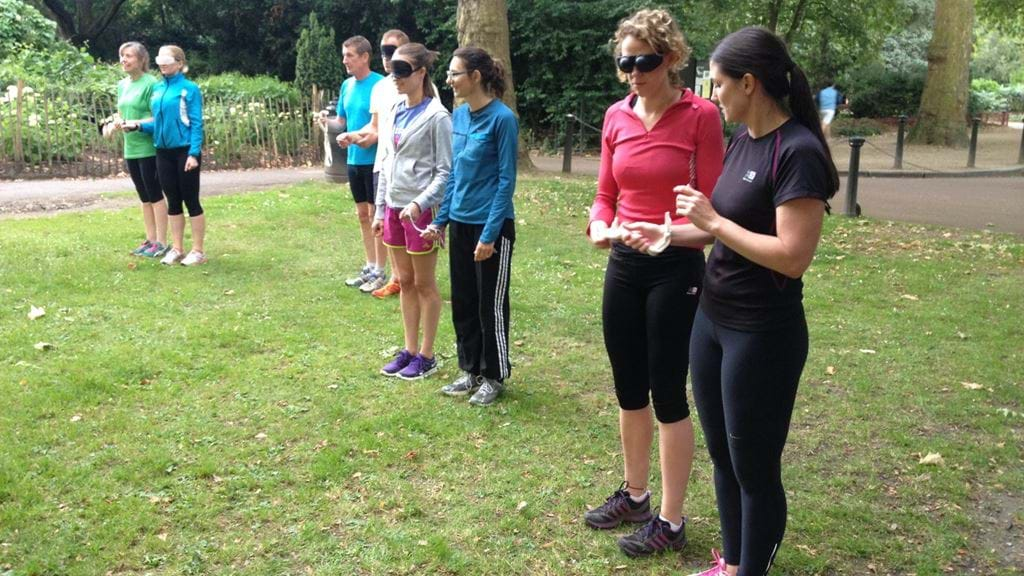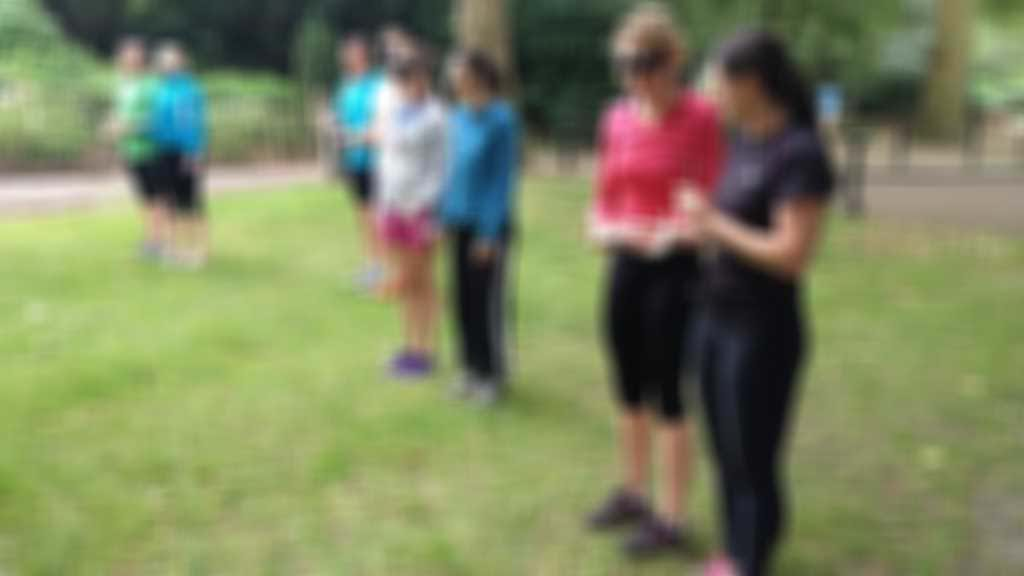Guide Running - first time for everything
13 October 2016

Any time you are asked to imagine something, often the scenario begins with ‘close your eyes’. In the case of guide running, that’s a pretty good place to start.
Guide running for the first time is an incredibly daunting experience. In an instant, you are responsible for another person’s wellbeing and safety. Think about that for a second – would you close your eyes and trust a total stranger to guide you around a track five times on a rainy Saturday morning, or a 5km parkrun with stones, fallen branches and dogs to navigate?
Ben Roback tells his story of how he became a guide runner:
I saw a guide running course posted online and enrolled in a session led by two exceptional trainers from England Athletics. After 90 minutes of theory and 60 minutes of practical work, I was a qualified guide runner. That combination of classroom learning and first-hand experience on the track provided an excellent foundation into guide running, and simulated the kind of scenarios you are likely to encounter when guiding. The real test comes when you get out there and take those first few steps as a guide.
As a qualified guide listed on the England Athletics Guide Runner database, I was contacted by a blind man in London who was looking to get into running again. As a young man, Surrinder was a competitive runner, but losing his sight meant that regular running stopped. Now in his 50s, Surrinder is back to running regularly again.
Typically we aim for eight laps of the Maida Vale athletics track, pushing to beat our time from previous weeks and occasionally stretching to an extra lap or two. The reactions we get from other runners are always entertaining, as they never know whether to look shocked or quietly impressed.
As we approach the track, walk around its inside and stretch at the 100m finish line, other runners look curious as to why we’re there and what we’re going to do. The same runners who looked surprised at the sight of a man walking with a cane in one hand and holding the elbow of a man with “GUIDE” across his vest in the other then look even more surprised when we start running. We run at a good pace and whilst Mo Farah won’t be losing any sleep over it, our pace is always quick enough to overtake a handful of casual runners on the track.
No one ever said that being blind means you can’t run fast.
In our first session, I was amazed by the immediate trust and faith Surrinder put in me. Whereas VI runners often like to run with a tether that keeps a physical link between runner and guide, Surrinder was happy to run alongside me and rely solely on verbal direction. That was a huge test of my confidence as a guide, but those tests will come for any guide runner and it should not serve as a deterrent to get qualified and volunteer.
After a cool down and some stretching, Surrinder takes my elbow with one hand and his cane in the other, and we walk back to the park entrance to go our separate ways, his journey home requiring much more thought and care than mine.
The track is an excellent place to learn the ropes of guide running – the terrain is guaranteed to be flat and the course is routine, making it easier for both guide and runner. The guide can focus on giving verbal direction and ensure any overtaking is done safely and smoothly. This is an ideal scenario for guiding in which there are as few variables as possible, and the surrounding environment is stable. A near empty running track is the best place to start building your confidence as a guide, which is crucial when instructing a VI runner.
There is an ongoing initiative encouraging more VI runners at parkruns across the country, and I have guided at Highbury Fields and Mile End parkrun. I was matched with a local VI runners looking for a guide having made my availability known to Run Directors at locations in London.
From a guide’s perspective, this poses a new set of challenges, as the environment is less guaranteed. As well as focusing on giving vocal direction and adjusting the tether as necessary, as a guide you must pay attention to any potential hazards on the ground, such as others using the public path on foot and on bikes, overtaking and being overtaken – the list goes on.
Guide running even over a short distance can require a huge amount of energy because of the mental focus required to think and see for two people, and I suspect that challenge grows as the distance increases.
All things considered, I would really encourage others to think about taking the course needed to qualify as a guide runner. It is a truly unique experience that benefits both runner and guide. The time commitment can be as small or large as you wish, and I would especially urge those in the running community who may take their own ability to run for granted to take up guide running.
Ben uses twitter to talk about guide running. Go to @RobackBen.
More news from RunTogether




